dokumentARfilm Mediathek
Medien für den Unterricht
Trefferliste (14)
Unterrichtsfach
Suche verfeinern
Epoche
Unterrichtsstufe
Sprache
Weitere Suchkriterien
(nicht kombinierbar)

Längsschnitt: Frieden
Frieden – Definition und Grundbegriffe
Was ist Frieden? Diese Frage beschäftigt im Laufe der Geschichte viele Philosophen. Einer von ihnen ist Immanuel Kant, der 1795 in seinem Entwurf „Zum Ewigen Frieden“ schreibt: „Der Friedenszustand unter Menschen, die neben einander leben, ist kein Naturzustand […]. Er muss also gestiftet werden.“ Auch heute fordern Friedensprozesse Politik und Gesellschaft immer wieder heraus. Denn Frieden ist mehr als nur die Abwesenheit von Krieg. Es ist ein zivilisatorisches Konzept. Frieden ist nicht nur der Zustand eines gesicherten Zusammenlebens zwischen Staaten und innerhalb von Gesellschaften, sondern ein Prozess, der sich gegen Gewalt, Unfreiheit und soziale Ungerechtigkeit richtet.
Sprache: Deutsch
Kapitel anzeigen
Kapitel ausblenden
Kapitel 1 - 2:36 Min. - Definition Frieden
Kapitel 2 - 2:34 Min. - Voraussetzungen für Friedensverhandlungen (1)
Kapitel 3 - 4:13 Min. - Voraussetzungen (2): Waffenstillstand und Kapitulation
Kapitel 4 - 1:35 Min. - Schuld
Kapitel 5 - 5:12 Min. - Ahndung von Kriegsverbrechen
Kapitel 6 - 3:00 Min. - Frieden heute

Längsschnitt: Frieden
Friedensbewegung
Der Vietnamkrieg ist für die USA militärisch und moralisch ein Desaster. Trotz des Einsatzes von Napalmbomben und chemischen Kampfmitteln ist er für die US-Armee nicht zu gewinnen. Zeitungen und Fernsehen berichten zudem über Kriegsgräuel und Massaker an der Zivilbevölkerung. Für ein Ende des brutalen Krieges protestieren ab Mitte der 1960er Jahre weltweit Hunderttausende, darunter vor allem Studenten. Besonders aktiv ist die Friedensbewegung in den USA. Dort demonstrieren Friedensaktivisten gemeinsam mit Bürgerrechtlern, denn auch viele schwarze US-Amerikaner kämpfen im Vietnamkrieg und werden dort sinnlos verheizt. Der „Marsch auf Washington“ von 1967 mit 200.000 Teilnehmern ist ein Höhepunkt der Antikriegs- und Bürgerrechtsbewegung.
Sprache: Deutsch
Kapitel anzeigen
Kapitel ausblenden
Kapitel 1 - 4:47 Min. - Krieg dem Kriege – Ernst Friedrich und das Anti-Kriegsmuseum
Kapitel 2 - 2:15 Min. - Ohne mich – Gegen Wiederbewaffnung und Atomtod
Kapitel 3 - 2:21 Min. - Frieden in Vietnam – Vietnamkrieg und amerikanische Bürgerrechtsbewegung
Kapitel 4 - 4:40 Min. - Schwerter zu Pflugscharen – Entspannungspolitik und NATO-Doppelbeschluss
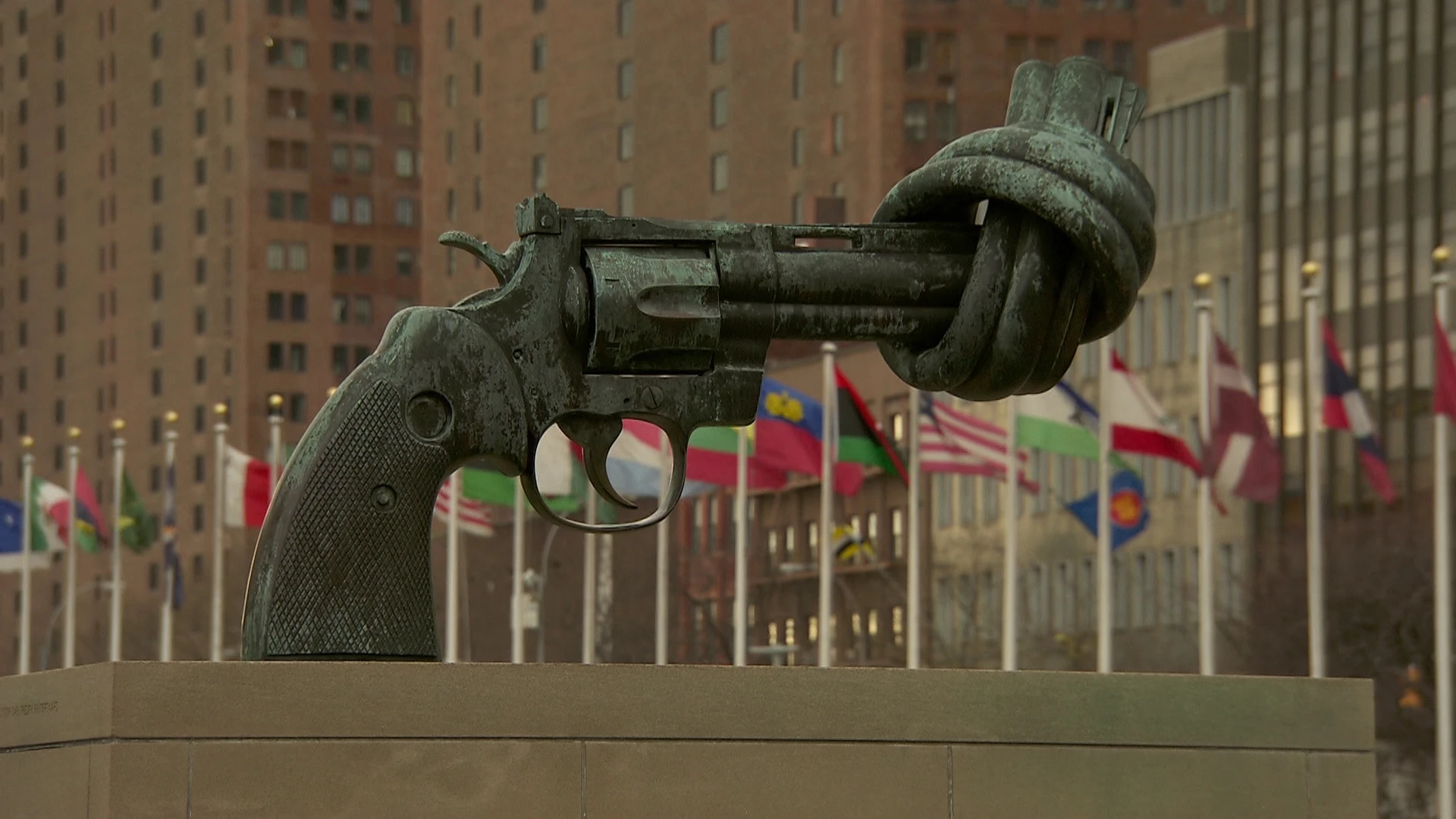
Längsschnitt: Frieden
From Kant to Küng – Peace Theories and Peace Today
In 1919, the League of Nations is founded in Geneva in response to the First World War. It is the first supranational organisation designed to secure enduring world peace by settling international conflicts through arbitration. But it fails, partly because important nations such as the USA and the Soviet Union refuse to join it. While the Second World War is still raging, the decision is made to set up a successor organisation, the UNO (United Nations). It undertakes the League of Nations’ functions since 1945, but with greater powers to enforce conflict prevention, the protection of human rights and international cooperation. The Security Council bears the greatest responsibility for preserving peace and decides upon military action. | In this film version, German interviews and historical or literary quotes remain untranslated.
Sprache: Englisch
Kapitel anzeigen
Kapitel ausblenden
Kapitel 1 - 3:28 Min. - Kant
Kapitel 2 - 6:15 Min. - From League of Nations to UNO
Kapitel 3 - 2:45 Min. - Instruments for Securing Peace: ICTY
Kapitel 4 - 2:09 Min. - Peace Theories Today – Senghaas
Kapitel 5 - 3:31 Min. - Küng: Project Global Ethic

Längsschnitt: Frieden
Peace – Definition and Basic Concepts
What is peace? This question occupies the minds of many philosophers throughout history. One of them is Immanuel Kant, who writes in his essay "Perpetual Peace" in 1795: "A state of peace among men who live side by side is not the natural state ... Thus the state of peace must be established." A process that continues to challenge politics and society until today. For peace is more than just the absence of war. As a civilisational concept, it is not only the state of secure coexistence between countries and within societies, but a process that is directed against violence, lack of freedom and social injustice. | In this film version, German interviews and historical or literary quotes remain untranslated.
Sprache: Englisch
Kapitel anzeigen
Kapitel ausblenden
Kapitel 1 - 2:36 Min. - The Definition of Peace
Kapitel 2 - 2:34 Min. - Pre-conditions for Peace Negotiation (1)
Kapitel 3 - 4:13 Min. - Pre-conditions (2): Armistice and Capitulations
Kapitel 4 - 1:35 Min. - Guilt
Kapitel 5 - 5:12 Min. - Prosecution of War Crimes
Kapitel 6 - 3:00 Min. - Peace Today
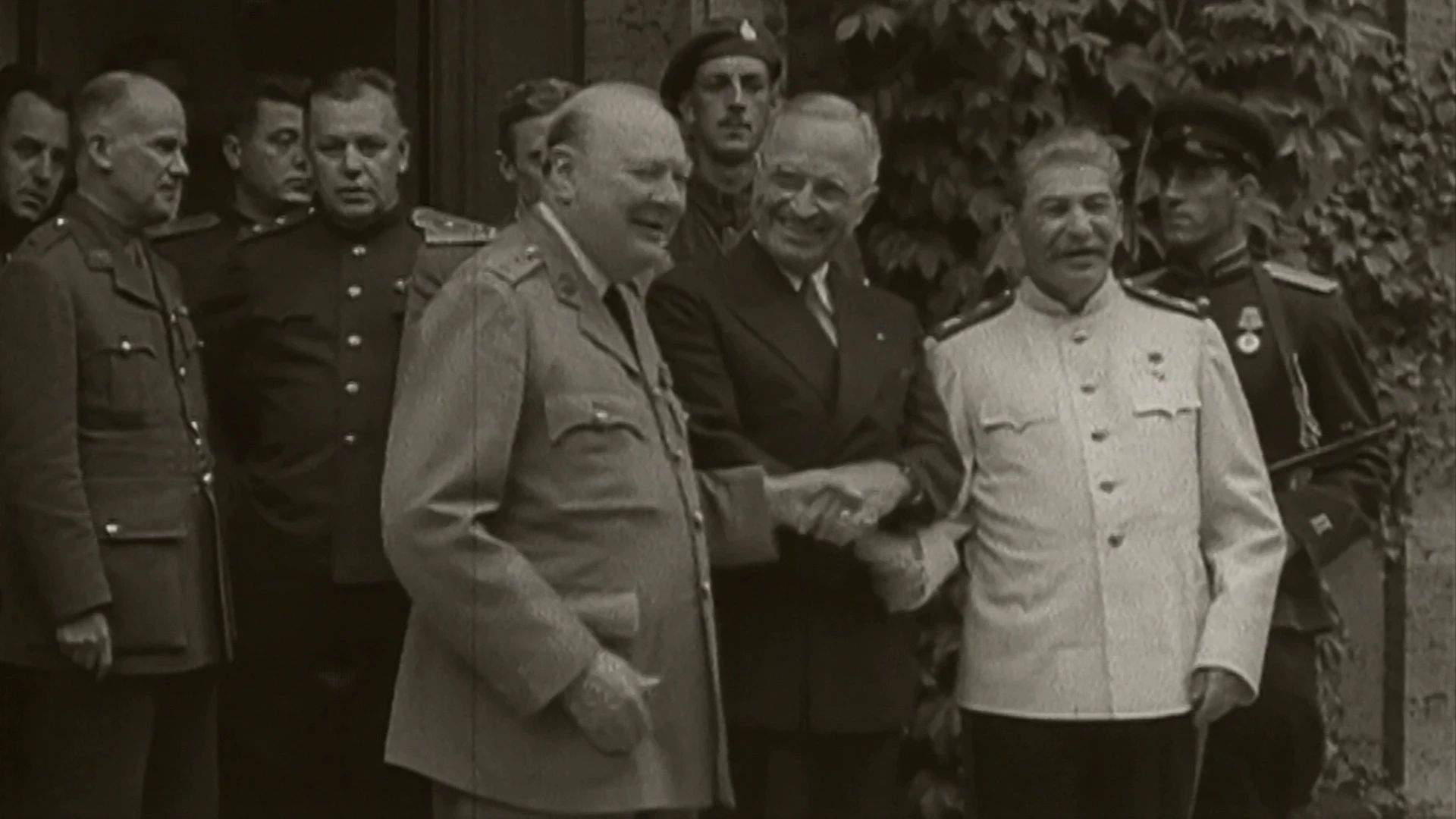
Längsschnitt: Frieden
Potsdamer Abkommen 1945
Bisher nie da gewesene Verbrechen machen einen Friedensschluss mit den Tätern nach dem Ende des Zweiten Weltkrieges unmöglich. Von den Verhandlungen über die Zukunft Deutschlands wird die ehemalige NS-Elite darum ausgeschlossen. Auf der Potsdamer Konferenz entscheiden allein die Sieger. Deutschland wird in vier Besatzungszonen aufgeteilt und nach gemeinsamen politischen Richtlinien – festgehalten im Potsdamer Abkommen – behandelt. Der Vorsatz, das Land als Ganzes zu betrachten, scheitert jedoch bald am wachsenden Misstrauen zwischen dem sowjetischen Staatschef Stalin und den Westalliierten. Einigkeit besteht dagegen darüber, dass begangene Kriegsverbrechen geahndet werden sollen. Zum ersten Mal in der Geschichte wird führenden Vertretern eines Staates der Prozess vor einem internationalen Militärtribunal gemacht.
Sprache: Deutsch
Kapitel anzeigen
Kapitel ausblenden
Kapitel 1 - 3:25 Min. - Kapitulation Deutschlands und Gründung der UNO
Kapitel 2 - 2:03 Min. - Ideologischer Grundkonflikt: USA – Sowjetunion
Kapitel 3 - 3:36 Min. - Potsdamer Konferenz und Ergebnisse
Kapitel 4 - 5:20 Min. - Nürnberger Prozess
Kapitel 5 - 1:10 Min. - Von Potsdam zu den Zwei-plus-Vier-Gesprächen
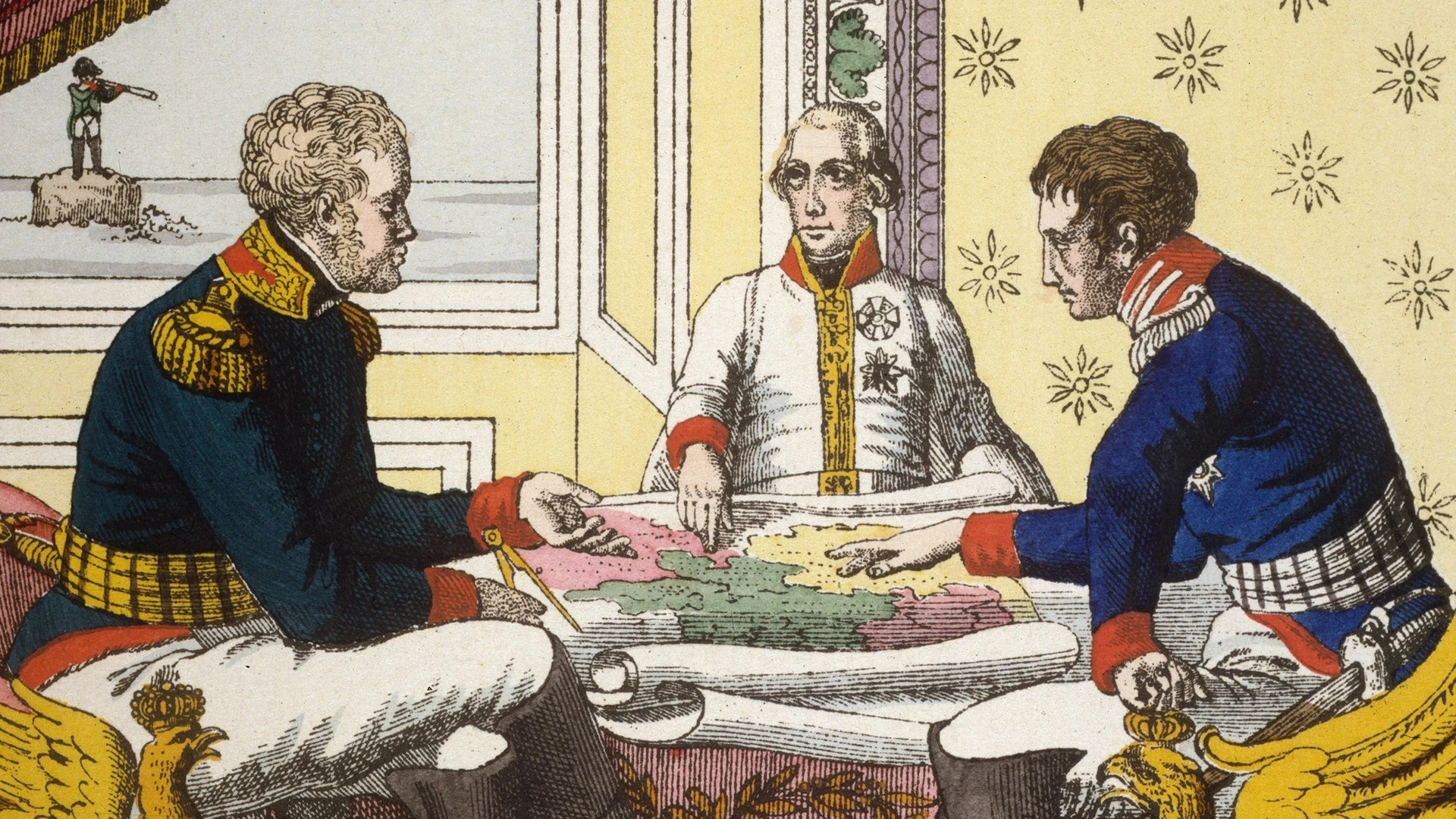
Längsschnitt: Frieden
The Congress of Vienna 1814/15
After the end of the Napoleonic Wars, the territorial reorganisation of Europe begins in 1814 at the Congress of Vienna under the leadership of Prince von Metternich. Defeated France sits at the negotiating table as an equal partner. For to secure a stable and lasting peace agreement, the aim is to restore the balance between the great powers Great Britain, France, Prussia, Austria and Russia. To prevent any further wars, the diplomats seek to restore the old political structures. They set up the Holy Alliance to suppress revolutionary movements and democratic aspirations wherever they occur. From now on, Europe, especially Germany, sinks into surveillance and censorship. | In this film version, German interviews and historical or literary quotes remain untranslated.
Sprache: Englisch
Kapitel anzeigen
Kapitel ausblenden
Kapitel 1 - 2:20 Min. - Initial Situation
Kapitel 2 - 5:36 Min. - Negotiations and Goals
Kapitel 3 - 6:02 Min. - Consequences and Perspective

Längsschnitt: Frieden
The Peace Movement
The Vietnam War is a military and moral disaster for the USA. Despite the use of napalm bombs and chemical weapons, the US army is unable to win. Moreover, newspapers and television carry reports of massacres and war atrocities against the civilian population. From the mid-1960s onwards, hundreds of thousands of protestors around the world mobilise for an end to the brutal war, among them mainly students. The movement is particularly active in the USA. Peace activists march together with civil rights groups, as many black Americans, too, are fighting overseas, being senselessly used as cannon-fodder. The 1967 "March on Washington" with 200,000 participants is one of the climaxes of the anti-war and civil rights movement. | In this film version, German interviews and historical or literary quotes remain untranslated.
Sprache: Englisch
Kapitel anzeigen
Kapitel ausblenden
Kapitel 1 - 4:47 Min. - War Against War – Ernst Friedrich and the Anti-War Museum
Kapitel 2 - 2:15 Min. - Without Me – Against Rearmament and Nuclear Death
Kapitel 3 - 2:21 Min. - Peace in Vietnam – The Vietnam War and the American Civil Rights Movement
Kapitel 4 - 4:40 Min. - Swords to Plowshares – Policy of Détente and NATO’s Twin-Track Decision
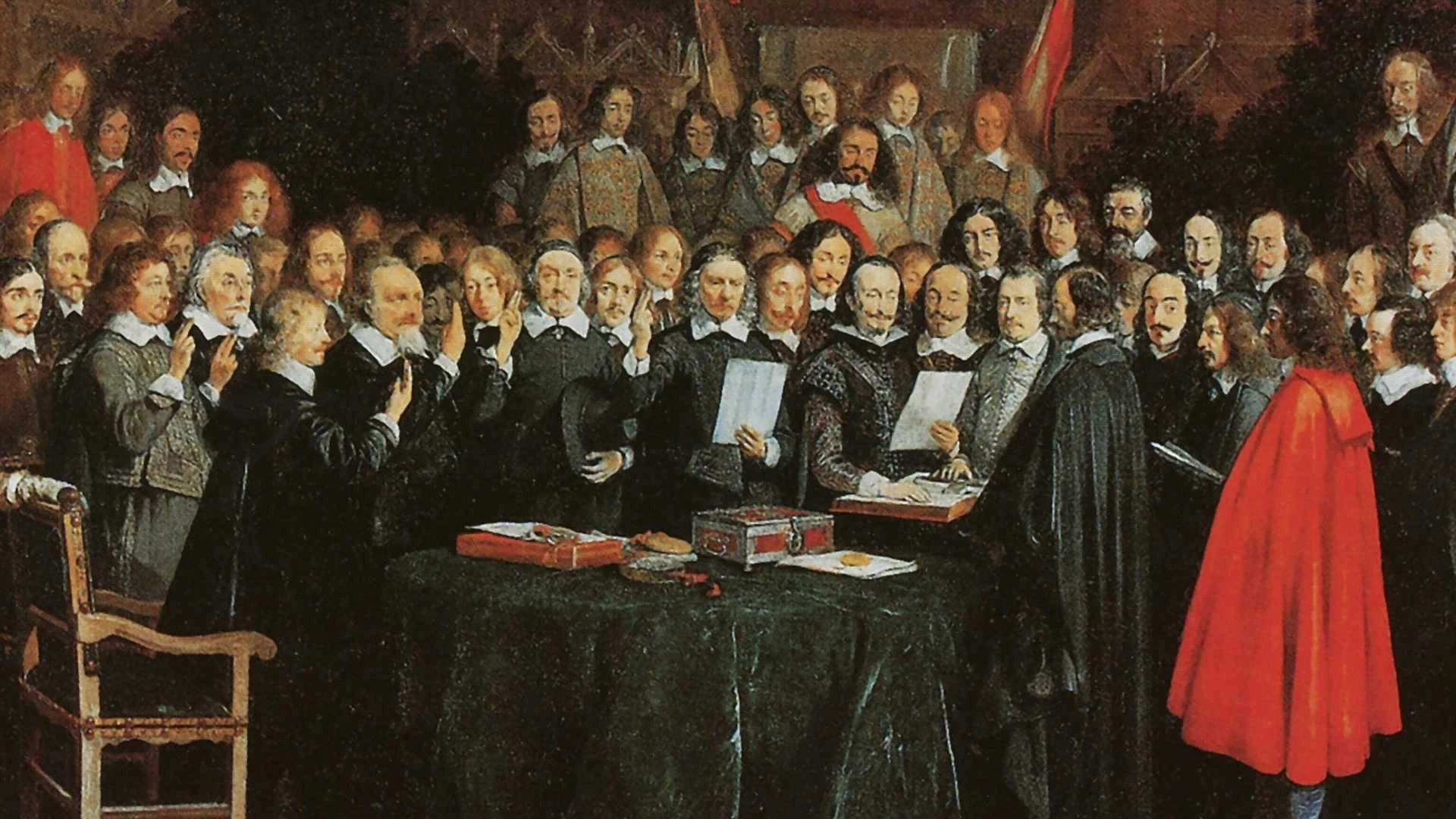
Längsschnitt: Frieden
The Peace of Westphalia 1648
Death, destruction, devastated territories: The Thirty Years’ War keeps Europe in thrall for a long time. It is not until 1648 that the Peace of Westphalia is concluded. However, not as a result of one of the many murderous battles, but after a negotiation marathon of five years – the first wide-ranging peace congress in history. Never has war been ended at the negotiating table before. Now, more than 100 delegations from all over Europe are haggling over political, territorial and confessional points of contention. "Forgive and forget" is the key principle, with war atrocities not being avenged. The Peace of Westphalia becomes a turning point in European history and imposes a new order to the continent. | In this film version, German interviews and historical or literary quotes remain untranslated.
Sprache: Englisch
Kapitel anzeigen
Kapitel ausblenden
Kapitel 1 - 2:29 Min. - Initial Situation
Kapitel 2 - 5:41 Min. - Negotiations
Kapitel 3 - 1:56 Min. - The People
Kapitel 4 - 6:33 Min. - Results

Längsschnitt: Frieden
The Potsdam Agreement 1945
After the end of the Second World War, the unprecedented crimes of the Third Reich make a peace agreement in partnership with the perpetrators impossible. The former Nazi elite is therefore excluded from the negotiations on the future of Germany. So, at the Potsdam Conference, decisions are made by the victorious powers alone. They divide up Germany into four occupation zones that are to be dealt with according to a set of common political guidelines, as laid down in the Potsdam Agreement. But due to growing mistrust between the Soviet leader Stalin and the Western Allies, intentions to treat the country as a whole soon fail. There is agreement, however, that the war crimes committed will not go unpunished. For the first time in history, leading representatives of a state are tried before an international military tribunal. | In this film version, German interviews and historical or literary quotes remain untranslated.
Sprache: Englisch
Kapitel anzeigen
Kapitel ausblenden
Kapitel 1 - 3:25 Min. - Capitulation of Germany and Founding of UNO
Kapitel 2 - 2:03 Min. - Basic Ideological Conflict: USA vs. the Soviet Union
Kapitel 3 - 3:36 Min. - The Potsdam Conference and its Consequences
Kapitel 4 - 5:20 Min. - The Nuremberg Trial
Kapitel 5 - 1:10 Min. - From Potsdam to the Two-plus-Four Talks
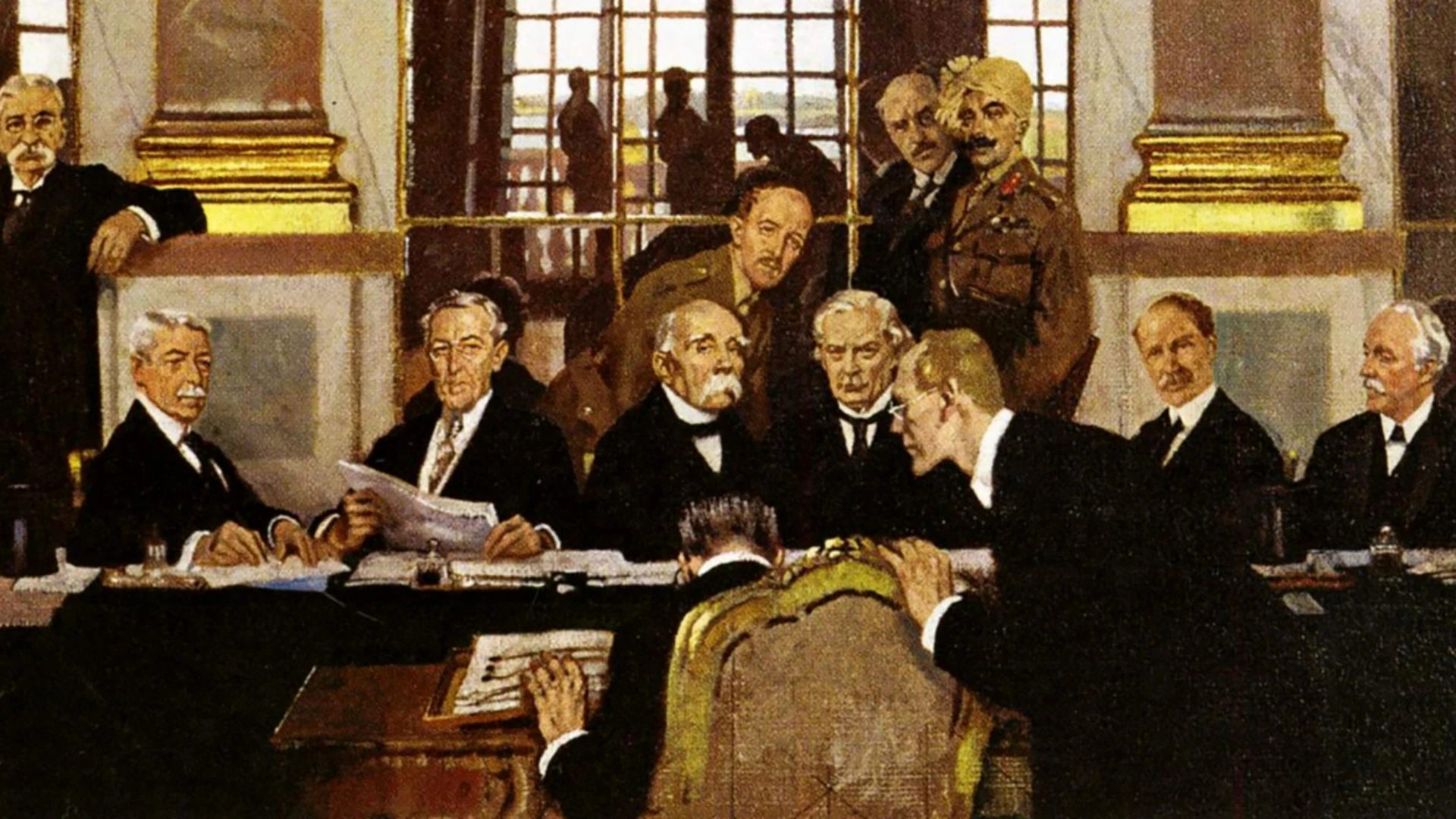
Längsschnitt: Frieden
The Treaty of Versailles 1919
"The moment of reckoning is here. You have asked for peace. We are disposed to grant it." With these words, French Prime Minister Clemenceau welcomes the German delegation to Versailles on May 7, 1919. After the end of the First World War, the victorious powers have negotiated the terms of peace without the German Reich. Now they are presented to the German delegates – and come as a shock. Hopes for a peace of understanding as advocated by US President Wilson are not fulfilled. There is no forgiving and forgetting. Instead, sole war guilt is assigned to the Reich. For many Germans it is a "shameful peace". Soon, the National Socialists will take advantage of the anti-Versailles climate for their rise to power. | In this film version, German interviews and historical or literary quotes remain untranslated.
Sprache: Englisch
Kapitel anzeigen
Kapitel ausblenden
Kapitel 1 - 3:51 Min. - Armistice 1918
Kapitel 2 - 4:43 Min. - Negotiations and Goals
Kapitel 3 - 3:18 Min. - Results
Kapitel 4 - 3:08 Min. - Reactions in Germany, Treaty Execution and the League of Nations
Kapitel 5 - 1:04 Min. - Perspective
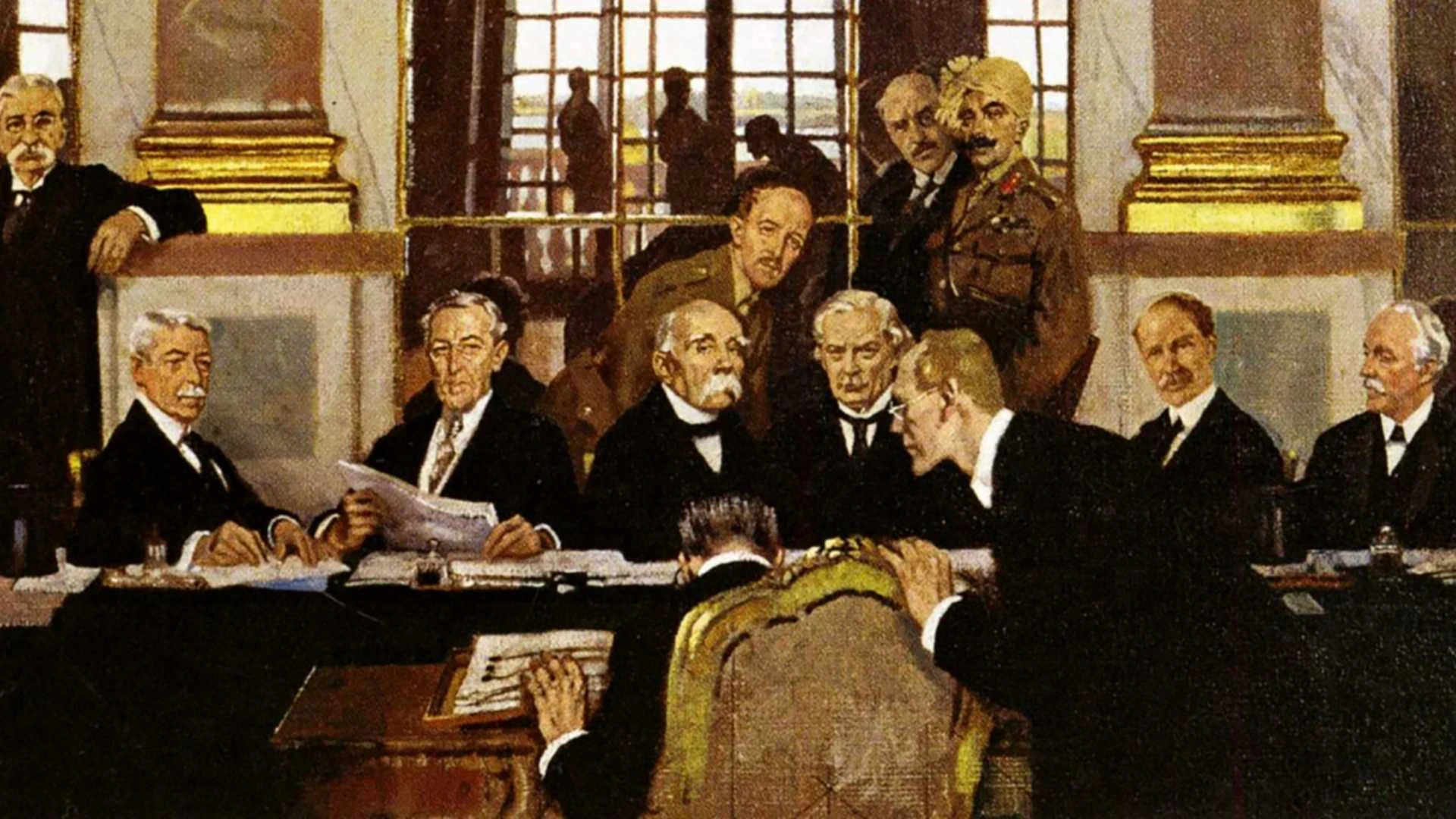
Längsschnitt: Frieden
Versailler Vertrag 1919
„Die Stunde der Abrechnung ist da. Sie haben um Frieden gebeten. Wir sind geneigt, ihn ihnen zu gewähren.“ Mit diesen Worten begrüßt der französische Ministerpräsident Clemenceau am 7. Mai 1919 die deutsche Delegation in Versailles. Nach dem Ende des Ersten Weltkrieges haben die Siegermächte ohne Deutschland über die Bedingungen für einen Friedensschluss verhandelt. Nun werden diese übergeben – und sind für die Deutschen ein Schock. Die Hoffnung auf einen vom US-Präsident Wilson propagierten Verständigungsfrieden erfüllt sich nicht. Es gibt kein Vergeben und Vergessen. Stattdessen muss das Reich die alleinige Kriegsschuld übernehmen. Für viele Deutsche ist es ein „Schmachfrieden“. Geschickt werden die Nationalsozialisten die Versailles-feindliche Stimmung für ihren Aufstieg nutzen.
Sprache: Deutsch
Kapitel anzeigen
Kapitel ausblenden
Kapitel 1 - 3:51 Min. - Waffenstillstand 1918
Kapitel 2 - 4:43 Min. - Verhandlungen und Ziele
Kapitel 3 - 3:18 Min. - Ergebnisse
Kapitel 4 - 3:08 Min. - Reaktionen in Deutschland, Unterzeichnung und Völkerbund
Kapitel 5 - 1:04 Min. - Ausblick

Längsschnitt: Frieden
Von Kant zu Küng – Friedenstheorien und Frieden heute
Als Antwort auf den Ersten Weltkrieg wird 1919 in Genf der Völkerbund gegründet. Die erste überstaatliche Friedensorganisation, die den Weltfrieden durch die schiedsgerichtliche Beilegung internationaler Konflikte dauerhaft sichern soll. Doch er scheitert, auch weil wichtige Nationen wie die USA und die Sowjetunion ihm fern bleiben. Noch während des Zweiten Weltkrieges wird die Gründung einer Nachfolgeorganisation, der UNO (Vereinte Nationen), beschlossen. Seit 1945 übernimmt diese die Aufgaben des Völkerbundes, besitzt jedoch stärkere Befugnisse, um Konfliktprävention, den Schutz von Menschenrechten und internationale Zusammenarbeit durchzusetzen. Der Sicherheitsrat trägt die größte Verantwortung für die Sicherung des Friedens und entscheidet über Militäraktionen.
Sprache: Deutsch
Kapitel anzeigen
Kapitel ausblenden
Kapitel 1 - 3:28 Min. - Kant
Kapitel 2 - 6:15 Min. - Vom Völkerbund zur UNO
Kapitel 3 - 2:45 Min. - Instrumente der Friedenssicherung: ICTY
Kapitel 4 - 2:09 Min. - Friedenstheorien heute – Senghaas
Kapitel 5 - 3:31 Min. - Küng: Projekt Weltethos